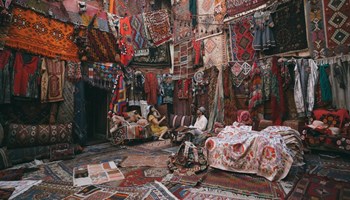Practical numbers: Part 2
In this lesson we use the context of an ancient bazaar to investigate measurement systems. Students select a name and base number for their system of measurement, using weights made from clay or similar material. They divide their clay into possible unit fractions to generate their set of weights. They assign a fictional currency name to the value of their clay. This lesson follows Practical numbers: Part 1.
Additional details |
|
| Year level(s) | Year 7 |
|---|---|
| Audience | Teacher |
| Purpose | Teaching resource |
| Format | Web page |
| Teaching strategies and pedagogical approaches | Classroom talks, Questioning, Concrete Representational Abstract model, Mathematics investigation |
| Keywords | Maths Hub lesson plan |
Curriculum alignment |
|
| Curriculum connections | Critical and creative thinking |
| Strand and focus | Number |
| Topics | Mathematical modelling |
| AC: Mathematics (V9.0) content descriptions |
AC9M7N09
Use mathematical modelling to solve practical problems involving rational numbers and percentages, including financial contexts; formulate problems, choosing representations and efficient calculation strategies, using digital tools as appropriate; interpret and communicate solutions in terms of the situation, justifying choices made about the representation
AC9M7N08
Recognise, represent and solve problems involving ratios
AC9M7N04
Find equivalent representations of rational numbers and represent rational numbers on a number line
AC9M7N06
Use the 4 operations with positive rational numbers including fractions, decimals and percentages to solve problems using efficient calculation strategies |
| Numeracy progression |
Multiplicative strategies (P9)
Interpreting fractions (P8) Proportional thinking (P2) Understanding money (P8) Additive strategies (P10) |
Copyright details |
|
| Organisation | Commonwealth of Australia |
| Copyright | © 2024 Commonwealth of Australia. Creative Commons BY 4.0. |

